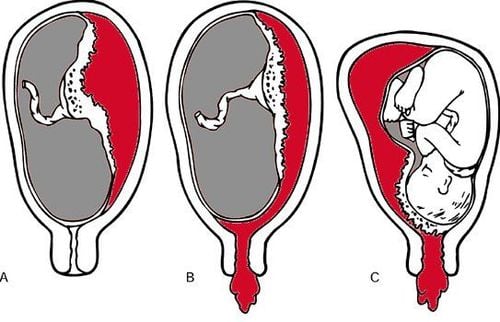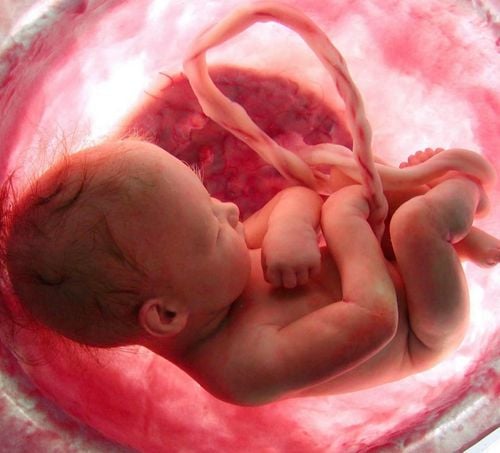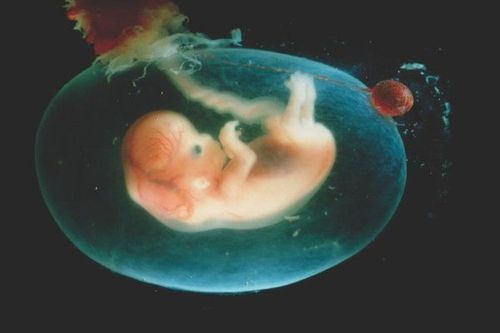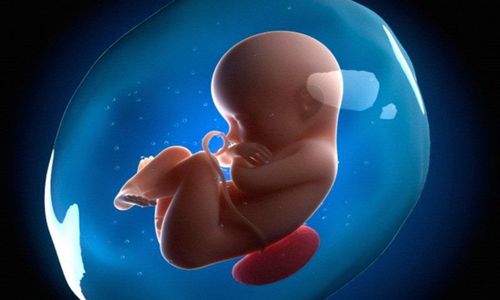This is an automatically translated article.
Posted by Master, Doctor Ly Thi Thanh Nha - Department of Obstetrics and Gynecology - Vinmec Danang International Hospital
Polyhydramnios can cause a pregnant woman's uterus to become overstretched and lead to premature birth, premature rupture of membranes or more dangerously, fetal malformations, placental abruption, umbilical cord prolapse...
1. Amniotic fluid formation and effects of amniotic fluid
The amniotic sac will be formed around the 12th day of pregnancy after the egg has been successfully fertilized. During the first trimester, amniotic fluid is similar to maternal plasma and isotonic, and in the next it becomes hypotonic. The volume of amniotic fluid will gradually increase until the beginning of the last stage of pregnancy. From 37 weeks to 41 weeks of pregnancy, the amniotic fluid volume may decrease by 10% and by 42 weeks onwards, the amniotic fluid volume will decrease very quickly.
Effects of amniotic fluid:
Helps in the normalization of the fetus Exchange of water and electrolytes between mother and fetus Regulates the body temperature of the fetus while in the womb Allowing the fetus to move on its own in the womb Easier uterus Helps to dilate the cervix during labor Protects the fetus from any direct trauma to the uterus.
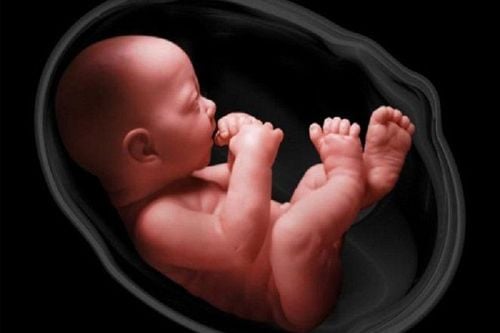
2. What is polyhydramnios?
Polyhydramnios is when the amount of amniotic fluid is more than 2000ml, diagnosed when the sonographer measures the amniotic fluid index (AFI) greater than or equal to 25 cm or measures the largest amniotic cavity index DVP (Deepest Vertical Pool) large. More than or equal to 8 cm
Polyhydramnios in the last month of pregnancy ( 36 weeks polyhydramnios ) has several risks:
Too much amniotic fluid can cause the mother's uterus to become overstretched and may lead to delivery premature or premature rupture of membranes (amniotic sac). When membranes rupture, there is a sudden drop in pressure in the amniotic cavity, increasing the risk of placental abruption and umbilical cord prolapse. These are 2 very dangerous complications in obstetrics and gynecology Polyhydramnios is also related to birth defects in the fetus: Late onset polyhydramnios can be seen in low intestinal obstruction, fetal neurological abnormalities or in fetal infections such as Parvovirus, Cytomegalovirus... If prenatal screening tests in the first and second trimesters show normal results, most of these problems are temporary and won't affect the health of the baby much. fetus.
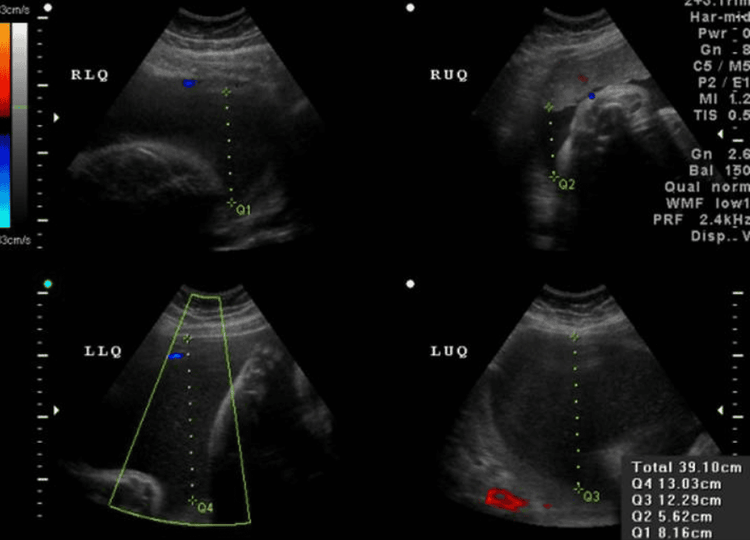
Polyhydramnios often makes the fetus manage or adjust poorly, which can lead to a breech pregnancy or during labor, the fetus is not bent well, increasing the risk of cesarean section Polyhydramnios also increases the risk postpartum bleeding and bleeding due to the uterus stretching too much, after giving birth there will be a risk of poor uterine contraction In addition, because polyhydramnios will increase the degree of pressure on the vascular system of the pregnant woman, the pregnant woman will symptoms of dyspnea, fatigue, edema, high blood pressure, or preeclampsia.
Trắc nghiệm: Mẹ bầu nên làm gì khi bị thiếu ối?
Nước ối đóng vai trò quan trọng trong sự tồn tại và phát triển của thai nhi. Trường hợp lượng ối quá ít (thiểu ối) thì sẽ tiềm ẩn những nguy cơ như gây thiểu sản phổi, chèn ép dây rốn,... Trả lời các câu hỏi trắc nghiệm sau sẽ giúp bạn có những cách phòng ngừa và điều trị kịp thời.The following content is prepared under supervision of Thạc sĩ, Bác sĩ y khoa, Tạ Quốc Bản , Sản phụ khoa , Khoa Sản phụ khoa - Bệnh viện Đa khoa Quốc tế Vinmec Phú Quốc
3. Causes of polyhydramnios during pregnancy
Maternal cause Diabetes mellitus before or during pregnancy is a common cause. If not controlled appropriately, polyhydramnios is easy. 10% of pregnant women with polyhydramnios have diabetes.
Anti-Rh antibodies and hemolytic diseases secondary to abnormal antibodies can cause severe fetal anemia or fetal edema associated with polyhydramnios.
Hypertonic dystrophy (uncommon).
Placental causes Choroidal hemangiomas can cause fetal heart failure and lead to polyhydramnios.
Pathologies that cause endometritis or placental lesions (syphilis).
Fetal causes Fetal central nervous system abnormalities (cerebrovascular, neural tube defects).
Structural defects of the digestive system (obstruction of the esophageal or alimentary canal).
Fetal chromosomal abnormalities
Non-immune edema: This phenomenon has a very poor prognosis and is often associated with polyhydramnios. A typical case of placental edema.
Twin-to-twin transfusion syndrome is a disorder with a poor prognosis, occurring with an incidence of 15% in monochorionic, biamniotic twin pregnancies, a complication of polyhydramnios in the recipient fetus.
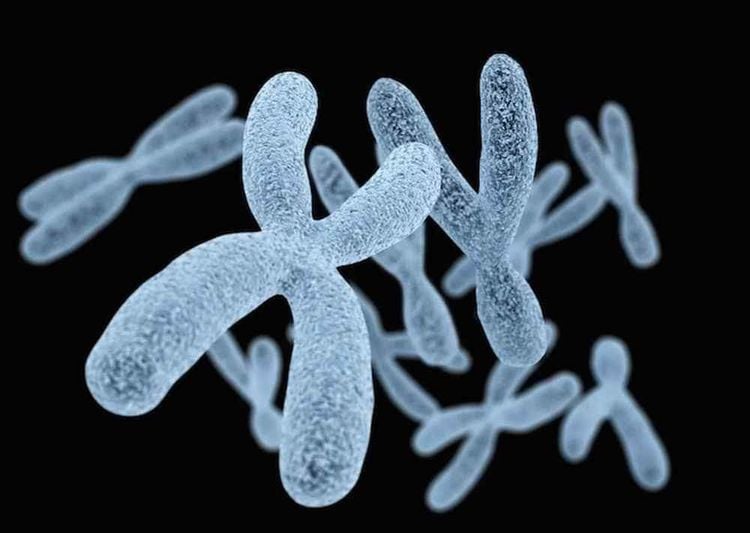
4. Should 36 weeks of polyhydramnios give birth early?
If the mother has polyhydramnios at 36 and 37 weeks, if there are no symptoms of acute polyhydramnios causing heart and lung compression of the pregnant woman such as chest fatigue, difficulty breathing, and a tight abdomen, she should not give birth early. Pregnant women still continue to monitor their normal pregnancy, have weekly prenatal check-ups to monitor the mother's overall health, fetal growth and amniotic fluid status.
Guidelines for monitoring, examining and taking care of pregnant women with polyhydramnios at 36 weeks or more:
Pregnant women with polyhydramnios should pay attention to food choices to avoid exacerbating excess amniotic fluid. Pregnant women can apply some suggestions below: Ensure the amount of protein and protein in the daily diet. Seafood and animal meat should be given priority. Eat a lot of green vegetables but limit the vegetables that contain a lot of water. In particular, they should not be processed in the form of soup/soup. Limit the intake of succulent fruits such as oranges, grapefruits, watermelons... Replace with other fruits rich in fiber and vitamins such as apples, pears, bananas, papayas,... 5 - 2 liters per day Salt has the ability to retain water in the body, so absolutely do not eat salty. Pregnant women need to have weekly antenatal check-ups to assess the mother's condition, amniotic fluid status and fetal position, fetal heart rate monitoring to assess fetal health. let the doctor know, especially when the mother realizes that her amniotic fluid is leaking, the water has broken, the abdomen becomes tight and painful, it is difficult to breathe for no reason.. At Vinmec International General Hospital, there is a maternity service available. The package is a solution to help pregnant women feel secure because there is the companionship of the medical team throughout the pregnancy. When choosing Maternity Package, pregnant women can:

The pregnancy process is monitored by a team of qualified doctors Regular check-ups, early detection of abnormalities Maternity package to facilitate the delivery process Newborns receive comprehensive care To Register for examination and treatment at Vinmec International General Hospital, you can contact Vinmec Health System nationwide, or register for an online examination HERE
MORE
Complications of polyhydramnios - How to diagnose Diagnosis and treatment of polyhydramnios Is polyhydramnios during pregnancy dangerous? Can polyhydramnios have a normal delivery or do I have to have a caesarean section?






